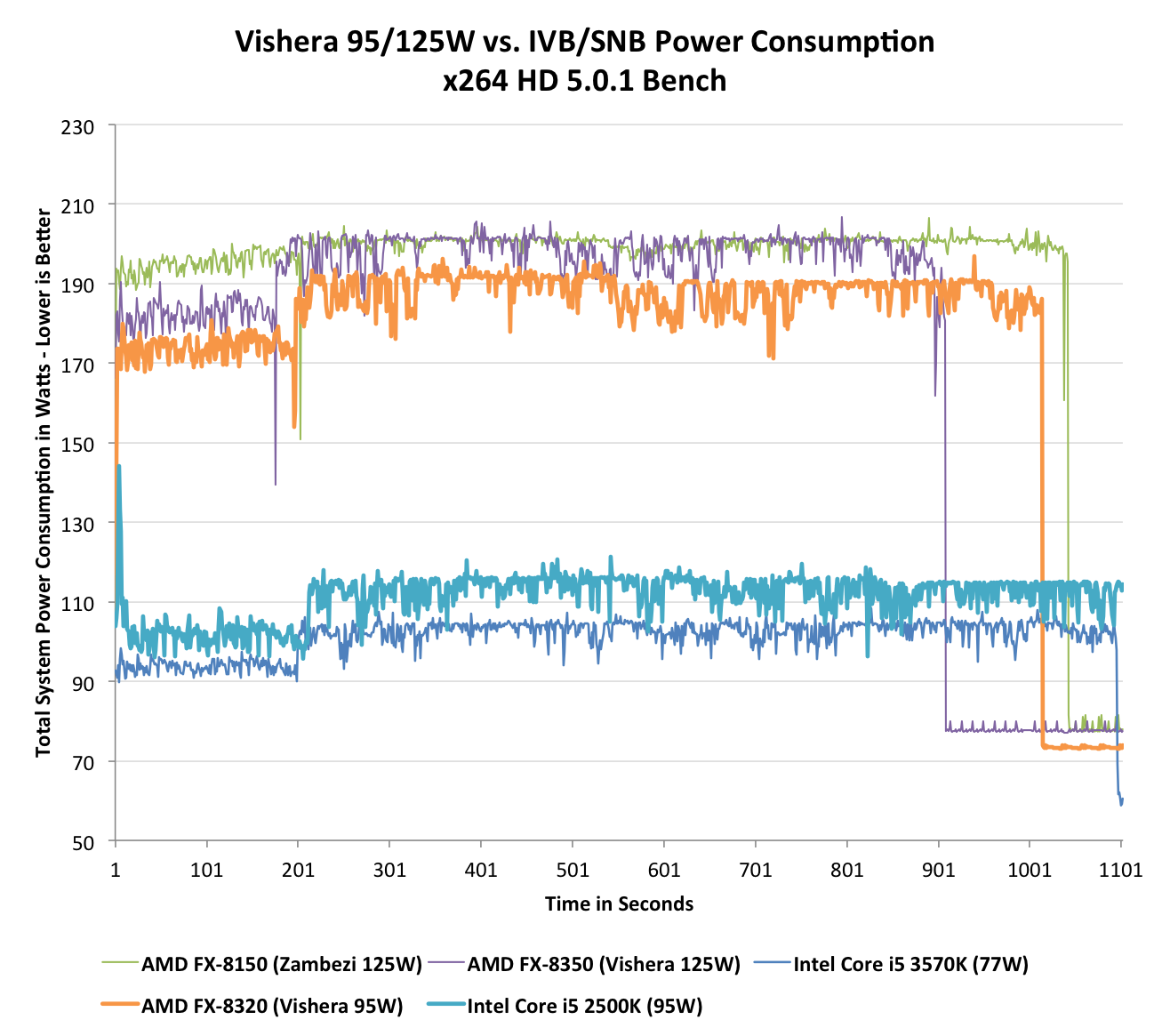AMD hasn't exactly been killing it lately. Bulldozer was a flop, shares have been declining, and the company will cut almost 1800 jobs by the end of the year. Ouch.
Intel has opened up a clear lead on the CPU front in the past few years. With Tuesday's launch of Vishera, the follow-up to Zambezi, AMD looks to close that gap. Zambezi CPUs were energy hogs with poor single-threaded performance; despite being priced the same as the i5-2500K, the FX-8150 struggled to compete with Phenom II chips in certain scenarios. AMD's strategy with Vishera, which uses 32nm Piledriver cores, is to regain lost ground in regards to performance while also changing the entry price points of their CPUs.
To learn more about the new CPUs, I checked out several reviews last night from the following sites:
- AnandTech: The Vishera Review: AMD FX-8350, FX-8320, FX-6300 and FX-4300 Tested
- Tom's Hardware: AMD FX-8350 Review: Does Piledriver Fix Bulldozer's Flaws?
- Guru3D: AMD FX 8350 processor review
- Hardware Canucks: FX-8350 CPU Review; AMD's Vishera Arrives
- TechPowrUp: AMD FX-8350 - "Piledriver" for AMD Socket AM3+
Performance gains over Zambezi (Bulldozer) generally look to be in the neighborhood of 15%. AMD's "throw a fuckton of cores at it" strategy continues to give them an edge in multi-threaded apps that can utilize their CPUs to the fullest. An unfortunate byproduct of this approach is that the single-threaded performance crown remains with Intel.
As it stands right now, gaming definitely falls closer to the single-threaded end of the spectrum. Half of the games we see nowadays are console ports that aren't exactly coded with ultimate PC performance in mind. The large majority of games today utilize 2-4 cores at the most, meaning half of the cores on an an octocore FX-8350 are going to be twiddling their thumbs while you're blowing things up. When you pit 4 Piledriver cores against the 4 cores of an i5-3570K, the Intel chip is going to win every time.
In addition, AMD still gets absolutely slaughtered in the power consumption category. While Vishera is more efficient than Bulldozer, Intel wasn't exactly sitting idle; Ivy Bridge further reduced the already low power consumption of Sandy Bridge. Take a look at this graph from AnandTech's review:
 |
| Graph of power consumption from AnandTech's review. source |
That's pretty significant, and in some cases the FX-8350 gobbles 70-80% more power than the i5-3570K. This isn't exactly unexpected since Ivy Bridge is a 22nm die shrink of Sandy Bridge, but the difference in power consumption between the different chip families is pretty immense. Depending on your usage the difference in terms of your electric bill might only be a buck or two per month, but that's going to add up over time.
While AMD might not have a processor that can stand toe-to-toe with Intel's SB-E or IB CPUs, the aggressive pricing of these new chips might at the very least put them back in the conversation. The top-end FX-8350 is supposed to be priced at $199, with the 8320, 6300, and 4300 coming in at $169, $132, and $122, respectively. Unfortunately, the 8350 is currently listed for $220 on Newegg, the same price as the i5-2500K and only $10 less than the i5-3570K. While AMD still doesn't have anything to compete with Intel in the $200+ market, the company's CPUs remain a solid option for gamers and enthusiasts on a budget.
Piledriver is what Bulldozer should have been last year. AMD is still playing a costly game of catch-up; we'll see just how far behind they really are when Intel debuts Haswell next year.











0 comments:
Post a Comment